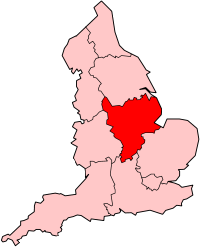History
The current Derwent power station was built on the site of the former Spondon power stations. Spondon A was built in the 1920s by British Celanese. [2] It was sold to the Derbyshire and Nottinghamshire Electric Power Company in 1929. It was then nationalised before eventually being sold to Courtaulds. [3] Spondon A eventually closed in the early 1980s. [4]
In 1959, the Spondon H process steam station opened alongside Spondon A. Spondon H had a capacity of 30 MW using three 10 MW sets, and was unique among the CEGBs power stations as it was designed primarily to produce steam to supply the British Celanese plant after passing through the back-pressure steam turbines. The station had two single-flue concrete chimneys of 96 m (315 ft) in height, one being demolished in the early 1990s the other in the early 2000s. The station also had four concrete cooling towers of 45 m (150 ft) in height located 0.25 miles to the east, these were in practice rarely used. They were demolished in 1984. [5]
The electricity output of the station was as follows. [6] [7] [8] [9] [10] [11]
Spondon electricity output, GWh| Year | Output, GWh |
|---|
| 1954 | 748.709 |
| 1955 | 724.713 |
| 1956 | 652.820 |
| 1957 | 567.757 |
| 1958 | 600.478 |
| 1961 | 517.099 |
| 1962 | 503.861 |
| 1963 | 507.254 |
| 1967 | 562.777 |
| 1972 | 370.268 |
| 1979 | 140.816 |
| 1982 | 66.373 |
Derwent power station
Derwent power station was originally built for Courtaulds Chemicals and was opened on 1 June 1995 by Tim Eggar, the Energy Secretary. It was owned 17.5% by Courtaulds, 33% by Mission Energy Company (UK) Ltd, and 49.5% by Southern Electric Power Generation (now owned by Scottish and Southern Energy). The nearby works are now owned by Accordis. The 33% stake of Mission Energy was sold to International Power. The other stakes are now owned by Mitsui. Near to the plant is Celanese Acetates Ltd, which used to be British Celanese, [12] which does not have any ownership of the power station. The textiles site was built in 1916 to provide waterproofing for aircraft wings, known as British Cellulose & Chemical Manufacturing and made cellulose acetate and Acetic anhydride. This came from techniques invented by the Swiss chemist, Henri Dreyfus. British Celanese and Courtaulds merged in 1957. Courtaulds was bought by Sara Lee in 2000 following a hostile takeover. The station later traded as Derwent Cogeneration Ltd.
Closure
In 2012, it was announced that the Combined Heat and Power plant (CHP) was to stop supplying steam to the adjacent textile plant due to it closing. [14] [15] The gas station also closed later that year with a loss of around 30 jobs. [16] Since 2012, the station has been retained for future use. In 2018, Peel Environmental purchased the mothballed station in the hope of recommencing power generation at the site. [16] However, these plans did not go ahead, and the station is due to be demolished in 2021 as it is "no longer commercially viable". [17]
This page is based on this
Wikipedia article Text is available under the
CC BY-SA 4.0 license; additional terms may apply.
Images, videos and audio are available under their respective licenses.


